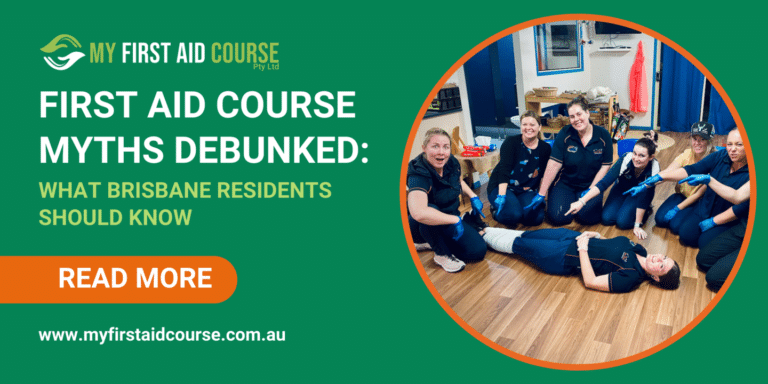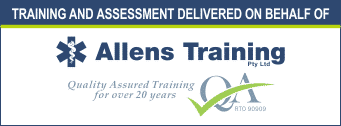As a registered nurse and first aid trainer, I’ve seen my fair share of emergency situations. The more you know the better. Today, we’re diving into the world of airway adjuncts – tools that can make the difference between life and death when someone’s struggling to breathe.
Whether you’re a curious bystander or an aspiring healthcare professional, understanding these techniques can give you valuable insights into the complexities of emergency care. Airway adjunct use and training is part of our HLTAID015 Provide Advanced Resuscitation and Oxygen Therapy course, while you’re reading why not consider enrolling to learn more?
Table of Contents
What Are Airway Adjuncts?
Airway adjuncts are medical devices designed to keep a person’s airway open and clear. They’ve been around in various forms for centuries, with early versions dating back to the 18th century. Today, they range from simple plastic tubes to more complex devices that can be inserted into the airway to maintain patency (openness) and facilitate breathing or ventilation.
These tools generally fall into two categories: basic adjuncts, which advanced resuscitation trained first aiders might use, and advanced adjuncts, typically reserved for highly trained emergency responders like paramedics. The distinction is important, as using the wrong type of adjunct or using one incorrectly can potentially cause harm.
Basic Airway Adjuncts for First Aiders
For those of us trained in advanced resuscitation first aid, the most common airway adjunct we encounter is the oropharyngeal airway (OPA), occasionally still called a Guedel airway, as they were known for many years. It’s a curved plastic tube that’s inserted into the mouth and throat to prevent the tongue from blocking the airway in an unconscious person.

OPAs are relatively simple to use, but they do require some training. They’re particularly useful when you need to maintain an open airway while performing rescue breaths or CPR. However, they have limitations – they can only be used on deeply unconscious patients, as they can trigger the gag reflex in someone who’s not completely out.
Random trivia: the first modern oral airway adjuncts had a metal mouthpiece attached to a straight rubber tube. Imagine the trauma to teeth and inside the mouth? So, after your surgery you needed a visit to the dentist!
We’ll be diving deeper into OPAs in an upcoming article, so keep an eye out for that if you want to learn more about this essential first aid tool.
Advanced Airway Adjuncts for Skilled Emergency Responders
Now, let’s step into the world of advanced airway management – the domain of paramedics and other highly skilled emergency responders. These professionals have an arsenal of sophisticated tools at their disposal, each designed to provide more effective airway management in complex situations.
Nasopharyngeal Airways (NPAs)
First up are nasopharyngeal airways, or NPAs.
Unlike OPAs, these are inserted through the nose and down into the pharynx. They’re particularly useful for patients who are semiconscious or have an intact gag reflex, as they’re generally better tolerated than OPAs.
NPAs look like soft rubber tubes and come in various sizes. They’re fantastic for maintaining an open airway, especially in situations where an OPA might not be suitable. However, they’re not without risks. Incorrect insertion can cause nosebleeds or, in rare cases, more serious complications. That’s why their use is typically restricted to trained professionals.

Supraglottic Airways
Next, we have supraglottic airways, with the iGel being a popular example here in Australia. These devices sit above the glottis (the opening between the vocal cords) and form a seal around the laryngeal inlet.
iGels and similar devices are a step up from basic adjuncts in terms of both effectiveness and complexity. They allow for better ventilation and offer some protection against aspiration (inhaling stomach contents). Plus, they’re quicker and easier to insert than endotracheal tubes, making them a go-to choice in many emergency situations.
The downside? They require significant training to use correctly. A misplaced supraglottic airway can obstruct the airway instead of opening it, turning a bad situation worse. That’s why you’ll only see these used by paramedics and other advanced life support providers.
Intubation: The Gold Standard
At the top of the airway management hierarchy sits endotracheal intubation. This involves inserting a tube directly into the trachea (windpipe) through the mouth or nose. It’s considered the gold standard for airway management, providing the most secure airway and the best conditions for mechanical ventilation.
However, intubation is also the most challenging technique to master. It requires extensive training and regular practice to perform safely and effectively. In the wrong hands, attempted intubation can cause serious harm, including damage to the vocal cords or oesophagus. That’s why it’s reserved for the most highly trained professionals, like intensive care paramedics and anaesthetists.

The Australian Context
Here in Australia, our approach to airway management follows international best practices while adapting to our unique challenges. Our vast, often remote landscape means that advanced airway techniques can be lifesaving in situations where hospital care is hours away.
In most Australian ambulance services, paramedics are trained to use a range of airway adjuncts, from basic OPAs to advanced supraglottic airways. Some services also have intensive care paramedics trained in endotracheal intubation, though this varies by state and territory.
For advanced resuscitation first aiders and community responders, the focus remains on basic life support skills, with the use of simple adjuncts like OPAs when appropriate. It’s all about knowing your limits and working within your scope of practice.
Why the Distinction Matters
Understanding the difference between basic and advanced airway techniques isn’t just about satisfying curiosity. It’s about knowing your capabilities and limitations in an emergency situation.
Using advanced airway adjuncts without proper training isn’t just ineffective – it can be dangerous. There are legal and ethical considerations too. In Australia, as in many countries, using medical devices outside your scope of practice can have serious consequences.
Wrapping Up
From simple OPAs to complex endotracheal tubes, airway adjuncts play a vital role in emergency care. They’re a testament to how far medical science has come in our quest to save lives.
Whether you’re a layperson interested in first aid or a healthcare professional looking to expand your skills, there’s always more to learn about airway management. I encourage everyone to pursue first aid training – you never know when those skills might make a difference.
Want to Learn More?
If you’re in Brisbane and keen to expand your skills, why not check out HLTAID015 Provide advanced resuscitation and oxygen therapy course at My First Aid Course? As a trainer for this course, I’d be thrilled to help you take your emergency response skills to the next level.
Remember, in the world of emergency response, knowledge truly is power. Stay curious, stay prepared, and who knows – you might just save a life one day.






